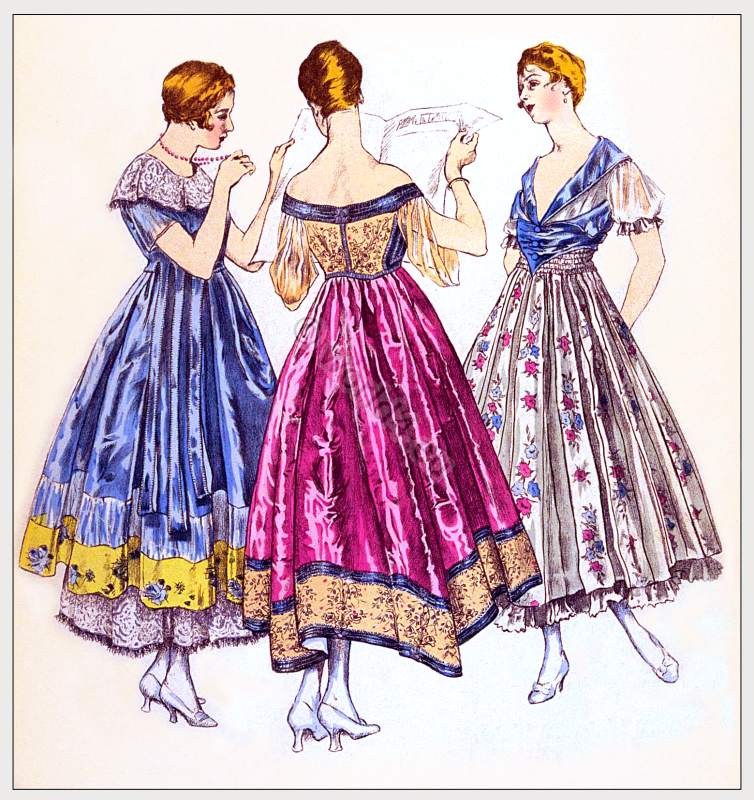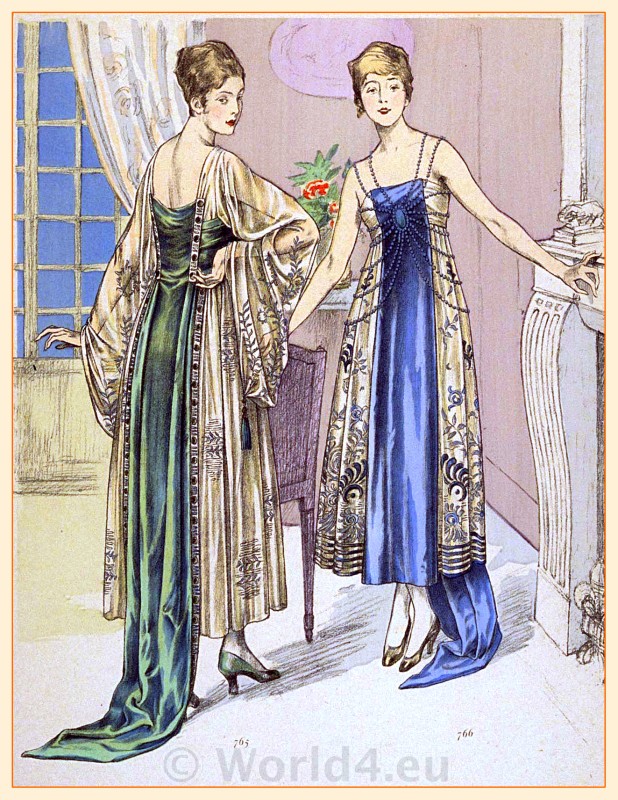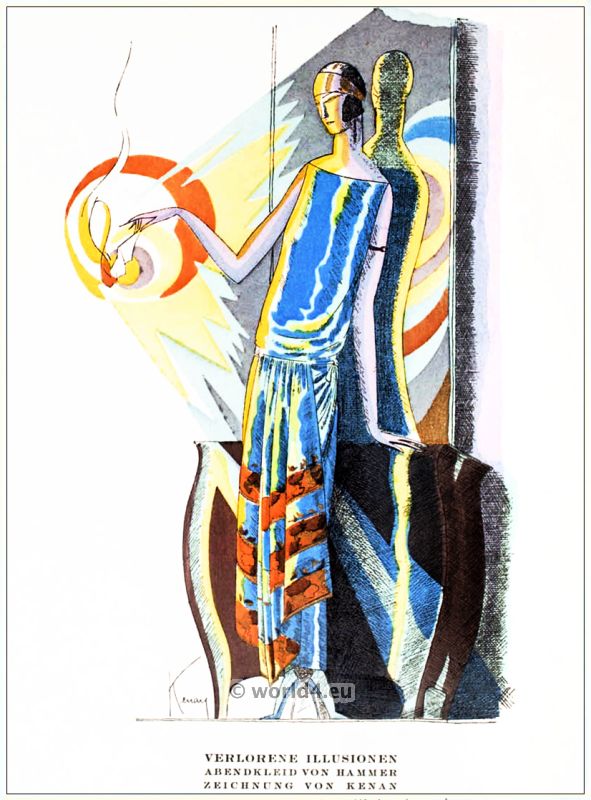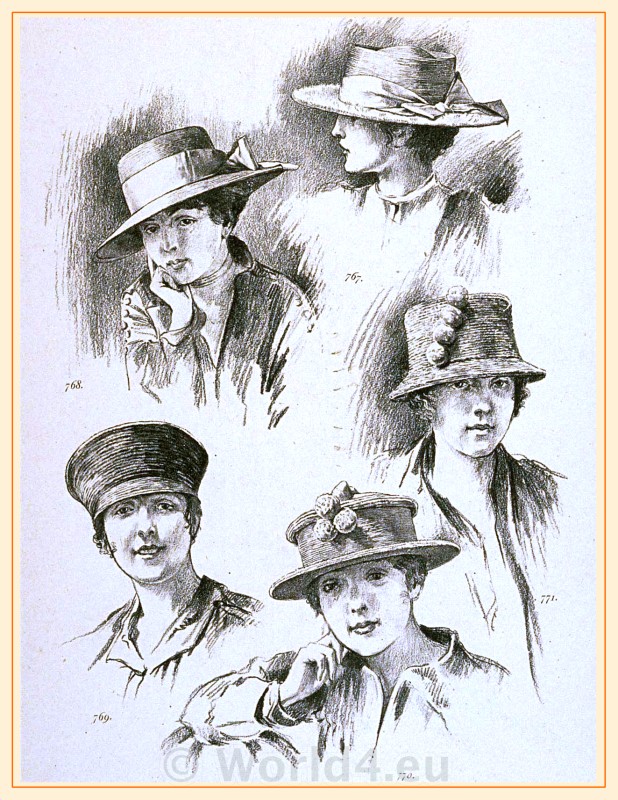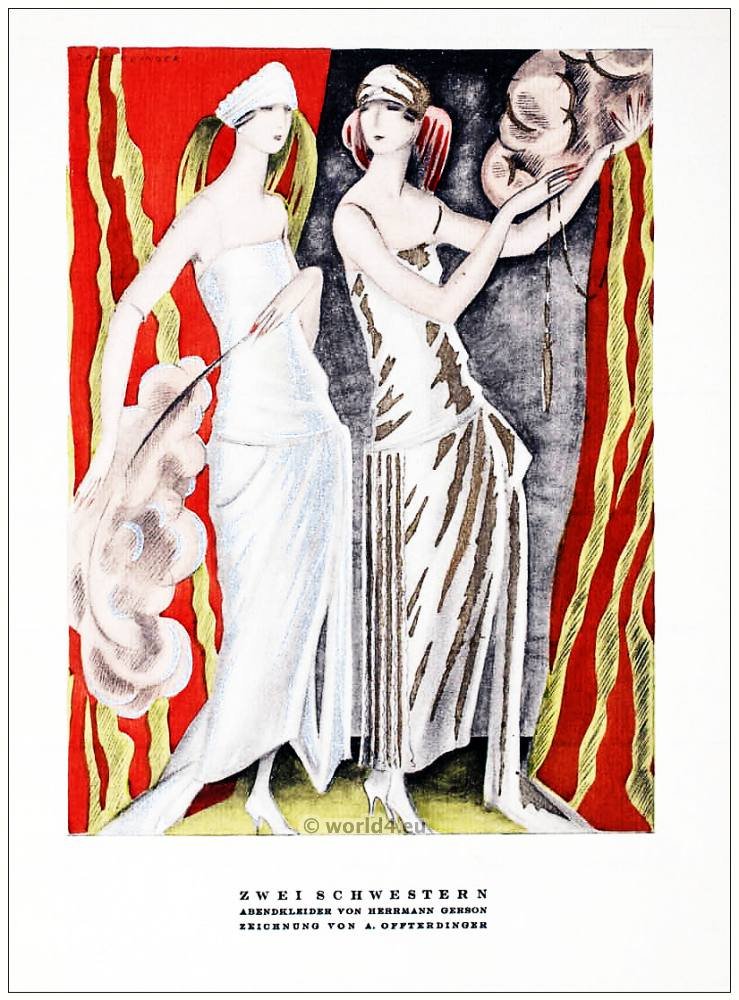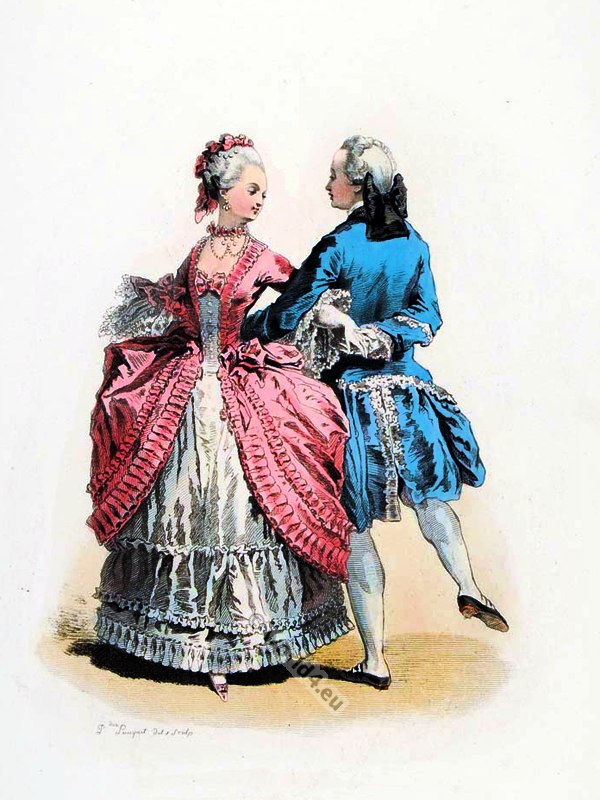Evening dresses by Fructus et Cie.
Robes du soir. Tissus de Coudurier, Fructus et Cie. Dentelles de Thiebault. Broderies de Lefranc. Ruban de Raimon.
Modèls des LES ÉLÉGANTES PARISIENNES.
Fig. Middle
Robe de gros de Londres bleu pâle ourlée d’un ruban de taffetas citron semé de roses bleues. Patron 926, coloris 4. de la Maison Raimon. Guimpe et dépassant de dentelle d’argent brodee à la main, de la Maison THIEBAUT. Tissus de la Maison Coudurier Fructus.
Fig. Left
Robe de taffetas rose, brodé d’argent, de perles fines et de corail d’apres la broderie de la Maison Maurice Lefranc et Cie.
Fig. Right
Robe en crépe Juliette blanche lamée or et rayée de petites fleurs multicolores. Patron 40523, coloris K de la Maison Coudurier Fructus. Dessous de tafettas blanc bordé d’un volant découpé, ceinture de taffetas bleu.
Source: LES ÉLÉGANTES PARISIENNES. DE LA MODE PARIS.
Revue Mensuelle. Avril 1916. NUMERO UN (Vol.1) Planche VI. Supplément des “Les Élégances parisiennes” N.1. Le Gérant: H. Bernard.
Discover more from World4 Costume Culture History
Subscribe to get the latest posts sent to your email.

